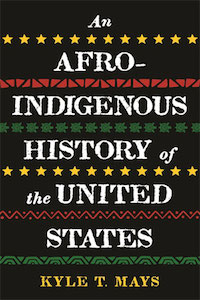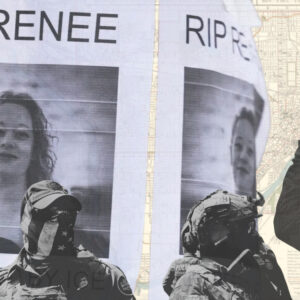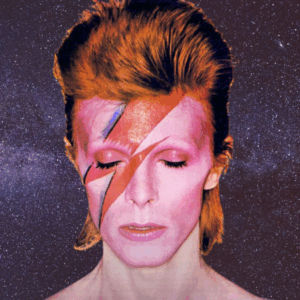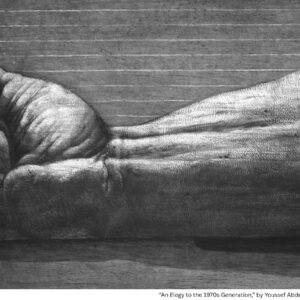
Why We Need to Rethink Afro-Indigenous History in the United States
Kyle T. Mays on Settler Colonialism, the Horrors of the Slave Trade, and the Forming of Black Identity
When we think of Africans arriving on the shores of what would become the United States, we see them through the lens of their condition of bondage beginning in the 16th century. We see them as African. As a result, we tend to assume that whatever identity they had, because of the Middle Passage, was ripped away, never to exist again. They were no longer indigenous. We also fold them into the project of US democracy.
It is true that Indigenous people are often erased in discussions of history and memory. That is the work of settler colonialism in the US. Even more, people see Indigenous people as having vanished; that’s why we have mascots and other forms of racism that are unique to Native people. Mascots perpetuate the idea that Indigenous peoples are either all dead or frozen in time. Therefore, they exist only as a caricature. Indeed, as Philip Deloria reminds us, the US nation-state’s very identity is constructed through “playing Indian.” However, I would pose this question: What if we remembered that those Africans forced to come to the British colony of Virginia were, actually, Indigenous people? How would that help us think differently about early Atlantic encounters between Indigenous peoples from the African continent and those in North America, and beyond?
A goal in this essay is to provide a few examples of these early indigenous encounters, arguing that enslaved Africans did not lose their ideas of what it meant to be Indigenous. Instead, I place them within a world where they maintained their idea of democracy while also being forced to come to terms with the condition of their blackness. Furthermore, I argue that we should, as best as we can, take seriously the trauma of what the transatlantic slave trade did to Africans. How did they cope with their new condition in a new place? We can only answer this question with the limited historical data that we have. I don’t mean to suggest that people of African descent are the First Peoples of this land; that is erasure, and a form of anti-Indigenous rhetoric that some African Americans perpetuate. I am interested in acknowledging the history of enslaved Africans, and asserting their humanity in its fullest.
Considering the trauma of enslavement, we uncritically assign the mark of enslavement to African peoples. We forget or minimize that these people carried with them their language, cultures, histories, and relationships. In rethinking how we view Afro-Indigenous history in the United States, we first need to recall that Africans forced to come to this country did not racialize themselves as Black in their homelands; they had their own indigenous roots and tribal beliefs; they were connected to lands, customs, and cosmologies. They were Indigenous.
To write about an Afro-Indigenous history of the United States is also to understand that encounters between Indigenous people in what became the Americas and Indigenous Africans were what amounted to a chance meeting between a variety of Indigenous groups, forced into contact because of capitalism and colonialism. And while we can debate whether those African descendants maintained specific tribal identities, what is not debatable is the fact that customs, traditions, languages, and their remembrances of land—the fundamentals of a people—remained. And so, it is here where I begin to trace how white supremacy forced these two groups into contact with one another, and where the tensions and possibilities of Afro-Indigenous solidarity emerged.
I begin with the history of Olaudah Equiano, Phillis Wheatley, and Paul Cuffee. Using their work, I explore how they constructed their relationship to place, and suggest that, in addition to reading each as a representative voice of Black people, we should also reframe their condition as African Indigenous peoples. Even beyond them, it should not be surprising that Africans, especially in the late 18th and early part of the 19th centuries, maintained some Indigenous knowledges about their cultures and histories while also forging early conceptions of Pan-Africanism.
*
OLAUDAH EQUIANO
There are familiar characters in US Afro-Indigenous history. Perhaps the first one we think of is Crispus Attucks. As in American horror cinema—well, it’s a persistent urban legend in Black communities—he was the first person killed in the American colonists’ fight for “liberty.” But that was 1770. What about the years prior? We can begin with Olaudah Equiano. There remains great controversy about Equiano’s The Interesting Narrative of the Life of Olaudah Equiano, or Gustavus Vassa the African (1789). In Vincent Carretta’s biography, Equiano, the African: Biography of a Self-Made Man (2009), he argues, based upon two sources, that Equiano falsified his African origins. Carretta believes that Equiano was born in the Carolinas. We should be careful about easily dismissing Equiano’s or other enslaved Africans’ birth claims. As historian Manisha Sinha remarked, “The places of birth of enslaved Africans were often misreported or assumed from their last known destination by persons doing the recording. The identity of displaced Africans was highly malleable and subject to arbitrary categorization by European authorities.” Equiano provides a window into the horrors of the slave trade.
Equiano was the first African in the West to describe the horrors of the slave trade to a large audience. In addition to telling us about the importance of slavery, he also allows for us to reconsider his Indigenous African roots. This begs the question: How does understanding Equiano’s roots help us expand our idea of who was Indigenous in the early Atlantic world, and how did Indigenous Africans, marked by enslavement, understand their own Indigenous selves within this new, traumatizing context?
*
PHILLIS WHEATLEY
During every Black History Month in schools across the US, students surely celebrate the life and legacy of Phillis Wheatley. Wheatley, who was born in western Africa around 1753, is known as the first Black person and first enslaved person to publish a book of poetry. She was a literary genius. Within the context of enslavement and gender discrimination, people like Wheatley were hardly able to utilize all of their gifts and reach the apex of their creative genius. Slave traders captured her and transported her across the Atlantic. She was purchased by John Wheatley to be a servant to his wife, Susannah. Although the property of John and Susannah’s, she virtually replaced their daughter, who had died at the same age of Wheatley, who was seven at the time. They named her Phillis, after the ship.
The Wheatleys taught Phillis to read and write in English, Greek, and Latin. That she learned to write in another language and spoke it fluently is pure, unadulterated Black Girl Genius. As African American literary scholar Henry Louis Gates Jr. observes, “By 1765, she had written her first poem; in 1767, when she was 13 or 14, the Newport Mercury published a poem that Susanna Wheatley submitted on her behalf.” In 1773, as the American Revolution approached, and in the same year she published her book, Poems on Various Subjects, Religious and Moral, John Wheatley emancipated her.
How did Indigenous Africans, marked by enslavement, understand their own Indigenous selves within this new, traumatizing context?
Wheatley did not appear to write much about her origins in West Africa, and history does not reveal to us exactly where she was from her birth through the first several years of her life. In the only poem in which she refers to her predicament, “On Being Brought from Africa to America,” which honors her Indigenous roots in Africa and as an enslaved person, she seems thankful for being given the opportunity to be brought from her “Pagan land” and taught the goodness of Christianity. However, she also makes sure to comment on how white people viewed Africans’ “dark skin”: “Their colour is a diabolic die.” Yet, she reminds her peers, “Remember, Christians, Negros, black as Cain, may be refin’d, and join th’ angelic train.” She challenged the white Christians to view Black folks as human beings, able to walk in the righteous path of Christianity. In addition to finding ways to challenge white Christians, she also communicated with Indigenous peoples, demonstrating some form of admiration, if not solidarity.
Wheatley was dedicated early on to the cause of ending slavery and offering a critique of the British colonists’ ideas of liberty. At the age of 11, Wheatley wrote to Reverend Samson Occom, a Mohegan Presbyterian minister. She would write to him again almost a decade later, on March 11, 1774, stating that she was “greatly satisfied with your Reasons respecting the Negroes, and think highly reasonable what you offer in Vindication of their natural rights.” Wheatley pointed out that freedom was an inherent right of people, writing, “In every human breast, God has implanted a Principle, which we call Love of Freedom; it is impatient of Oppression, and pants for Deliverance.”
She knew freedom, and it was taken away from her. It is no surprise that she held it close to her bosom. Freedom for her was an expression of love and a way of being. She understood even better than the colonists that the desire for liberty and an end to the brutalities of enslavement required an impatience in humanity’s refusal to end it. She also commented on the contradiction that white people, seeking liberty for their freedom from Britain, would also continue to enslave Africans. She wanted to “convince them of the strange Absurdity of their Conduct whose Words and Actions are so diametrically opposite.” She continued, “How well the Cry for Liberty, and the reverse Disposition for the exercise of oppressive Power over others agree.” Perhaps an early example of signifying, which is a form of indirect critique found in African American Vernacular English, she ended her letter by stating, “I humbly think it does not require the Penetration of a Philosopher to determine.”
We don’t know exactly why Wheatley wrote to Occom beyond showing him some love for his “obliging kind epistle.” It seems to be beyond the realm of their shared Christianity. Perhaps, being an Indigenous African herself, she identified in some ways with the experiences of Native people in revolutionary America. While she adopted a “Black” identity, in part because of the circumstance of her enslavement, she surely never gave up every component of her African identity, even as she was kidnapped and enslaved at an early age.
When Wheatley died, she was gravely ill. Perhaps she never really reached her true potential. Wheatley was not only an African genius, but an Indigenous genius who, because of enslavement, was never able to really delve into the meaning of what it meant to be an Indigenous person in her poetry. It makes me wonder, what if she could remember her homeland, her customs and traditions? How would that have impacted her poetry? We will never know.
*
PAUL CUFFEE
Perhaps one of the earliest examples of an Afro-Indigenous person who embodied and embraced both of his identities was Paul Cuffe. Cuffe was born on January 17, 1759, on Cuttyhunk Island, Massachusetts, to Ruth Moses, who was Aquinnah Wampanoag. His father’s name was Cuffe Slocum. Slocum’s African name was Kofi. According to Henry Louis Gates, “Kofi is a Twi word for a boy born on Friday, so we know that he was an Ashanti from Ghana.” Paul Cuffe biographer Lamont Thomas notes that the Ashanti people enslaved Kofi at a young age. He was later kidnapped by Fanti slave catchers, who took him to the Royal African Company on the Guinea Coast. He reached Newport, Rhode Island, in 1728, and was purchased by Ebenezer Slocum, a Quaker.
In 1742, Slocum sold Kofi to his nephew, John Slocum. In 1745, Slocum freed Kofi, and a year later, Kofi married Ruth Moses, a Wampanoag woman. We don’t know why he married this Indigenous North American woman. However, in the realm of these early encounters, there have to be a variety of contexts in which we understand how these Afro-Indigenous encounters occurred.
What is significant is that Paul Cuffe (and his siblings) was not just an early example of an Afro-Indigenous person, even though that is often how he is cited. Importantly, he is an Indigenous person, from his mother and father’s side. Although he embraced his blackness, or rather Africanness, we could imagine that his father shared with him not only the ideals of being a good Quaker, having been raised that way himself, but also some ideas of what it meant to be Ashanti, or Indigenous. We could not expect the elder Cuffe to have a fully developed sense of an Indigenous self since he was kidnapped as a preteen and brought to Massachusetts. However, he surely learned at least a few things, and passed them on to his children.
Although Paul Cuffe would refer to himself as “mustee,” or part Indigenous, he seems early on to have asserted his Indigenous identity. Indeed, even later in his life, he would title his own book Narrative of the Life and Adventures of Paul Cuffe, a Pequot Indian: During Thirty Years Spent At Sea and in Traveling in Foreign Lands. Given the strong anti-Black sentiment in the late 18th century, it should not be surprising why Cuffe emphasized his indigenous identity more often, especially early on, and would later fight to return himself and others to his father’s homeland. He understood one aspect: that he was marked as Black. It seems that throughout his life, he vacillated between being African and Indigenous. Of course, his identity was shaped by antiblackness, and the prospects of living in a world that was both anti-Black and anti-Indigenous, but where the mark of blackness forced him to be seen a certain way.
Cuffe was instrumental in advocating for Black folks to travel to back to Africa, particularly Sierra Leone. Why would Cuffe want to go back to Africa, given his mother’s Indigenous roots? Quite simply, it was because of the anti-Black racism of the time. While Native people in the northeast were experiencing dispossession, as an Afro-Indigenous person, Cuffe was also dealing with racism toward Black folks as well. He experienced dispossession and the stigma of blackness.
He understood one aspect: that he was marked as Black.
What can we learn from these early encounters and examples of Afro-Indigenous peoples? First, we should remind ourselves that Native US people should also include Indigenous Africans in their understanding of who is Indigenous. Second, we should reorient our understanding of Indigenous encounters in prerevolutionary America. This has the potential of helping Black youth see themselves not outside of modernity, but squarely in it, with Indigenous roots, even if they can’t necessarily go back to Africa and trace them. We also see the experiences of people mixed with African and US Indigenous roots who were considered Indigenous by some, but strongly identified with their African roots because of the rampant antiblackness. Finally, these experiences should help us understand that antiblackness and Indigenous dispossession were fundamental to the formation of US democracy. Without understanding both of these as white supremacist and settler-colonial projects, we will continue to have a distorted understanding of US history, and also have a severe lack in understanding our present circumstance.
__________________________________

Adapted excerpt from An Afro-Indigenous History of the United States. Used with the permission of the publisher, Beacon Press. Copyright © 2021 by Kyle T. Mays.
Kyle T. Mays
Kyle T. Mays is an Afro-Indigenous (Saginaw Chippewa) writer and scholar of US history, urban studies, race relations, and contemporary popular culture. He is an Assistant Professor of African American Studies, American Indian Studies, and History at the University of California, Los Angeles. He is the author of Hip Hop Beats, Indigenous Rhymes: Modernity and Hip Hop in Indigenous North America.












